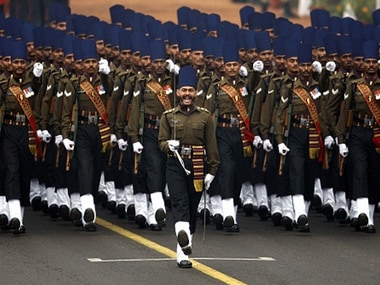The Indian Army’s modernisation and restructuring efforts are unlikely to yield the desired outcome unless ways are found to generate funds for new equipment and to keep the inventory in a high order of operability. There are three ways around the fund crunch the army finds itself in. One, increase the budget outlay. Two, bring in greater efficiency by enhancing the bang for the buck. Three, reduce the revenue element of the budgetary outlay to enhance the capital expenditure. Incidentally, this is the part that funds the modernisation plans. Coming to the reality of numbers first. The 2019-20 interim budget indicated 82% outlay for the revenue needs of the army and a mere 18% availability for capital. The reality of these numbers is borne by the fact that despite an increase of 10% in capital outlay, there was a 33% shortfall in meeting the committed liabilities in 2018-19. Thus, even an increase of Rs 7,198 crore in the interim budget is unlikely to meet the shortfall. It may even increase, given the modernisation objectives. [caption id=“attachment_5611281” align=“alignleft” width=“380”]  In order to reduce the numbers, India must plan the size of armed forces on the basis of threat assessment. GETTY IMAGES[/caption] Further, the cost of sustaining the manpower has led to a 42% growth in revenue expenditure and 25% in defence budget. Also, the defence pension budget remains a major component of the central government pensionary outlay. The increase in the manpower-related outlay has not been accompanied by a proportionate increase in the defence budget. The marginal increases have barely accounted for inflation and a low rupee-dollar rate. As a percentage of the gross domestic product (GDP), there has been a steady decline in the defence budget. It has for some years settled below 1.5% of GDP. Given these facts, the reality of the three possibilities raised earlier becomes obvious. The marginal annual increase in defence expenditure and its consistent reduction in GDP terms, presents a trendline that is difficult to miss. The armed forces will have to either adjust their expenditure or the government will need to limit its security ambitions. The scope for bringing in greater efficiency in procurement and expenditure remains an ongoing process, with procedures and structures constantly being fine-tuned. This, however, is unlikely to result in savings that can offset the gap between supply and demand. The only option is that the government and the armed forces somehow change the trajectory of the revenue-capital balance. This is particularly relevant for the army that remains the most manpower-intensive, given its role and responsibilities. It can be argued that these responsibilities, especially along unresolved borders, demand existing numbers. This is a self-defeating argument, which insists on an industrial-age solution for challenges of the information-technology era. Here are three ways to achieve a reduction in numbers. First, plan the size of the armed forces on the basis of realistic ambitions and threat assessment. The two-and-a-half front maximalist option that has defined the debate must be taken with a pinch of salt. The needs of deterrence must relate to deterrence alone, rather than grandiose plans of offensives that the nuclear overhang of the sub-continent all but rules out. Besides, such an eventuality, rather than being considered as the obvious contingency, must be seen as a failure of foreign policy and realpolitik. Second, if major conventional offensives have become less likely, then retaining structures and numbers to support them must be reconsidered. The reality of conflict has been staring us in the face for the last three decades. India confronts a hybrid threat, with conventional war a lesser possibility than terrorism and subversion. It is time this priority reflects in our manpower needs even as deterrence is maintained. Third, technology has always been the foremost drivers of military solutions. India’s approach to its security continues to be manpower oriented despite this reality. It is difficult to think of one paradigm shift that technology has introduced in India’s method of warfighting. As the world, including China, thinks of reducing numbers, we have only bloated over the years. There is a tendency to seek shelter for all our security challenges in numbers. The pitfalls of this approach not only reflect in a lopsided budgetary usage, it also adversely affects the satisfaction index. Promotional avenues, job satisfaction among the rank and file and nature of responsibilities undertaken are all bound to be hit by the insistence on maintaining such a large standing force. The writing is on the wall and it is time we took note of it. Vivek Chadha is a fellow at Institute for Defence Studies and Analyses
The Army’s modernisation and restructuring efforts are unlikely to yield the desired outcome unless ways are found to generate funds for new equipment and to keep the inventory in a high order of operability
Advertisement
End of Article


)

)
)
)
)
)
)
)
)



